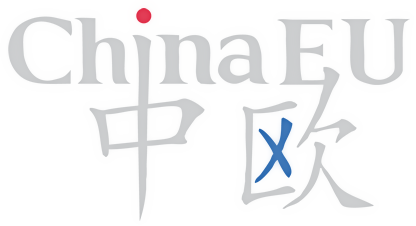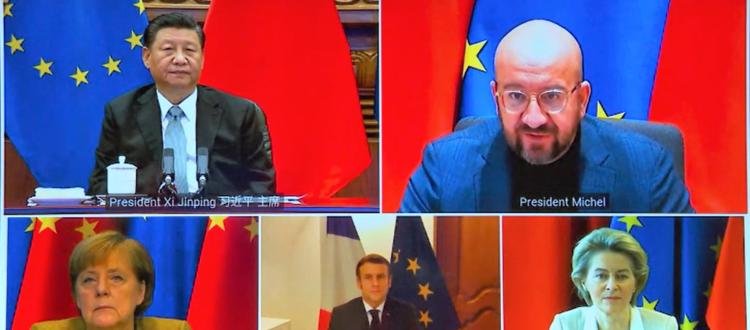Why EU businesses support the ratification of the EU-China Comprehensive Agreement on Investment
By Claudia Vernotti, Director of ChinaEU
Today, EU undertakings investing in China rely on bilateral investment agreements (BITs) signed many years ago between their Member States of origin and China. These agreements vary significantly between each other. For the past seven years, the EU Commission has been therefore negotiating an EU-China Comprehensive Agreement on Investment –or simply known as CAI – to modernize and replace the patchwork of bilateral agreements as well as ensure better and fairer conditions for EU investments in China.
The negotiations were eventually successfully completed on 30th December 2020, during the last days of the German EU Presidency. This circumstance is not fortuitous, because German companies are among the main EU undertakings investing in the still growing Chinese market.
The signature of the CAI constitutes a strong signal to the business community
CAI is not a usual free trade agreement, neither a traditional investment deal. The CAI is a sui generis agreement which combines elements on market access, disciplines on fair competition and commitments on sustainable development.
While the road to implementation of this agreement is long ahead of us and its content reflects many political compromises, we believe that from both the geopolitical and the economic perspective CAI is a big step forward in EU-China bilateral relations. It is also a positive sign for the world economy, an injection of trust in the globalization process, at times of unprecedented economic uncertainty and rising trade protectionism.
The CAI raises the international profile of the European Union
With CAI, the EU played catch-up with both the US and with Asian countries, which had already reached similar deals with Beijing (with the Phase 1 Deal and the Regional Comprehensive Economic Partnership respectively), as Executive Vice-president for Trade Valdis Dombrovskis pointed out last Friday in a speech at the World Economic Forum.
In negotiating CAI, the EU has been playing smart in offering something to China, which is given credit and trust in delivering on economic issues and to some extent on important social issues (like forced labor), while at the same time keeping the door open to alignment with like-minded countries during the ratification process and at WTO.
What businesses will win from the CAI?
First of all, the signature of the CAI doesn’t mean that the EU opens unconditionally its markets to Chinese investments. As Director General for Trade Sabine Weyand puts it, CAI is an important building block in the EU’s China strategy, but it is not the only element at EU’s disposal. It will not alone resolve all distortions in the EU-China economic relationship; the EU will continue to use trade defense instruments, foreign investments screening, as well as new tools such as the EU’s foreign subsidies legislation, the international procurement instrument and the EU global sanctions regime to cooperate with a country which is simultaneously a partner, a rival and a competitor.
Secondly, the agreement sets high benchmarks in three key areas of consideration for European and Chinese investors: market access, level playing field and investment-related sustainable development.
Let us look at some of the most remarkable achievements in each of these areas.
On market access, we see the confirmation of the current investment liberalization under the framework of the WTO. This is an important validation for Chinese investors in Europe, given the change in mood across Europe vis-à-vis China’s economic practices. It is also an important confirmation for European investors in China, as CAI binds China’s previous liberalizations preventing backsliding. What is most notable for European investors is the opening of a range of sectors previously restricted or precluded. While the detailed schedule is yet to be published, it is interesting to note the emphasis put on services, which today lag greatly behind investments in manufacturing. We particularly welcome the focus given to new energy, electric vehicles and digital services (notably cloud and computer services), which we see in line with the long-term goals of both the EU’s green and digital transition and China’s next five year plan of developing a low-carbon and innovative economy. We expect European online content providers to take advantage of these new liberalizations to partner up with Chinese platforms to offer new online services in China.
On the level playing field, CAI takes important steps to make European investments easier and fairer, getting China to agree on transparency obligations on subsidies on services as well as on rules against forced tech transfer – putting the EU on par with the US Phase 1 deal. The most important achievement is on the non-discrimination against European companies by Chinese SOEs – and it is worth noting how the EU applies a wide concept of SOEs, not only in reference to their ownership but also in relation to the role of the Party and the control it exercises in a given company.
In contrast with bilateral agreements concluded by China with Member States and in line with previous FTAs signed by the EU, CAI binds the parties into a value-based investment relationship. The commitment is not to lower labor and environmental protection in order to attract investment, with China agreeing to work towards the ratification of the ILO fundamental Conventions on forced labor.
The CAI is an unfinished symphony
In order to reach an agreement, China and the EU left some contentious issues out of the agreement, in order to allow further negotiations: in particular investment protection and dispute settlement mechanisms (CAI indicates a state-to-state arbitration). On these issues, which are of crucial importance for investors, parties agreed to conclude negotiations separately and tentatively within two years from the signature of CAI, probably coinciding with the French EU Presidency. This means that the original objective to replace completely the series of current BITs is not fully achieved: the CAI does not cover investment protection, included instead in covered by these bilateral agreements, which therefore will remain applicable.
Intellectual property protection and public procurement, which remain today important concerns of European investors in China, are not included in the CAI and will be addressed through other instruments outside the scope of this agreement – among others, the EU-China geographical indications deal, entering into force this year.
What next?
For the CAI to be operational it should go through the consent procedure. The process will take anything from six months to two years to be finalized. And the road is not without perils, with oppositions existing in the European Parliament, notably around labor rights.
The deal is enthusiastically supported by the European business community, who has been a strong advocate of its conclusion. “Thirty per cent of global growth over the next 10 years will come from China,” was the comment of the European Union Chamber of Commerce in China to the Financial Times last month “Do we want to be part of this or not?”
We do hope to see smooth ratification and prompt implementation of a deal which, if fully put in practice, would not only boost economic growth via increased bilateral investment flows, but also infuse renewed trust in the rules-based international trade system, in which for good or bad, China will remain an important player for the years to come.


